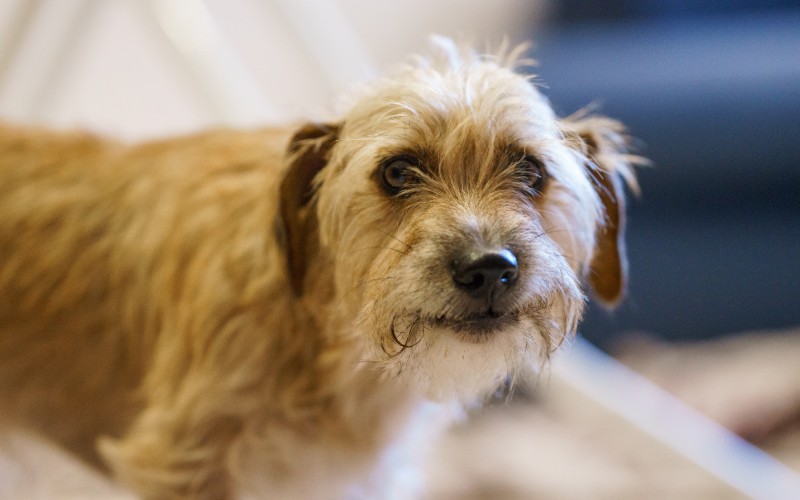
Pet Poison Prevention: It Only Takes One Chance Encounter

Keeping pets safe is the number one priority of dedicated pet owners. In fact, people who love and care for animals go above and beyond to ensure their health and well being. Unfortunately, accidents happen, and pets can find themselves in a heap of trouble. Since they don’t know whatever it is they’re eating, smelling, or rolling around in could be dangerous, pets rely on us to keep their ducks in a row. To that end, we offer some reminders to keep pet poison prevention on the front burner.
Fixing the Focus
Every third week of March is reserved for raising awareness about poison prevention. This year, it’s March 17-23.
From paint thinners to medication, chemicals are a fixture in our modern world. While we don’t go around licking things, animals interpret the world around them using their mouth and nose. Because of this, our pets depend on us to poison-proof their environment.
No Shortage
It’s true, there’s no shortage of dangerous items in your pet’s everyday life. The most common sources of pet poisoning are also items that make life easier (e.g., pain/fever relievers) or more beautiful (e.g., plants). That being said, you can still have these things in your house or car, but knowing how to store them securely is essential to pet poison prevention.
A Walk-Through
Going through the typical rooms in a household, it’s normal to find things that could endanger your pet’s health. Consider the following areas:
- Kitchen – In addition to toxic human foods like raisins, grapes, xylitol, macadamia nuts, garlic, onions, chocolate, coffee, and alcohol, the trash can or compost bin can be just as dangerous. Always secure lids and proper storage in the kitchen; never leave items on the counter or table without close supervision. Store backpacks and coats in a closet.
- Bathroom – Cleaning products, like toilet bowl cleaner and bleach, must be stored properly. Automatic bowl cleaner products can be harmful if your pet likes to drink out of the toilet. Medications (especially acetaminophen and ibuprofen), inhalers, vitamins, and dietary supplements must remain out of sight. Always keep your pet’s medications separate from yours.
- Garage – Generally speaking, the garage is probably the least pet-friendly space in the home. Products like antifreeze (ethylene glycol) are extremely hazardous; always clean up leaks or spills, and store the bottle behind a sealed cabinet. Brake fluid, window cleaner, mice/rat bait, insecticides, paint, and glue should never be on the floor.
- Yard – There are lots of ways to create a yard and garden that’s safe for your pet to enjoy, but products like fertilizers, cocoa mulch, insecticides, snail bait, and herbicides shouldn’t be used while your pet is outside. There are also various plants and flowers that, if eaten, can cause dangerous symptoms.
Pet Poison Prevention
Houseplants are lovely, as long as they don’t impact your approach to pet poison prevention. Check out this video of the top 10 toxic houseplants before visiting the greenhouse. Additionally, please be aware of the following threats to pet safety:
- Liquid or simmering potpourri
- Essential oil diffusers
- Ashtray and smoking cessation products
- Batteries
Preventing a pet emergency is always a priority, but being able to recognize the signs of one is equally important:
- Vomiting
- Diarrhea
- Drooling
- Nausea
- Bleeding
- Pale gums
- Increased heart rate
- Weakness
- Collapse
- Excessive thirst
- Strange behaviors
Please contact us immediately if you observe any of these symptoms. If an emergency occurs outside our usual business hours, please contact a local pet emergency center.
Contact Us!
2301 Columbia Pike #G-1, Arlington, VA 22204
Phone: (703) 920-5300
Fax: (703) 685-8860
Email: info@myarlingtonvet.com
Office Hours
-
Monday
8 a.m. – 8 p.m.
-
Tuesday
8 a.m. – 8 p.m.
-
Wednesday
8 a.m. – 6 p.m.
-
Thursday
8 a.m. – 6 p.m.
-
Friday
8 a.m. – 6 p.m.
-
Saturday
8 a.m. – 2 p.m.
-
Sunday
CLOSED
- Doctors’ hours are by appointment only.



